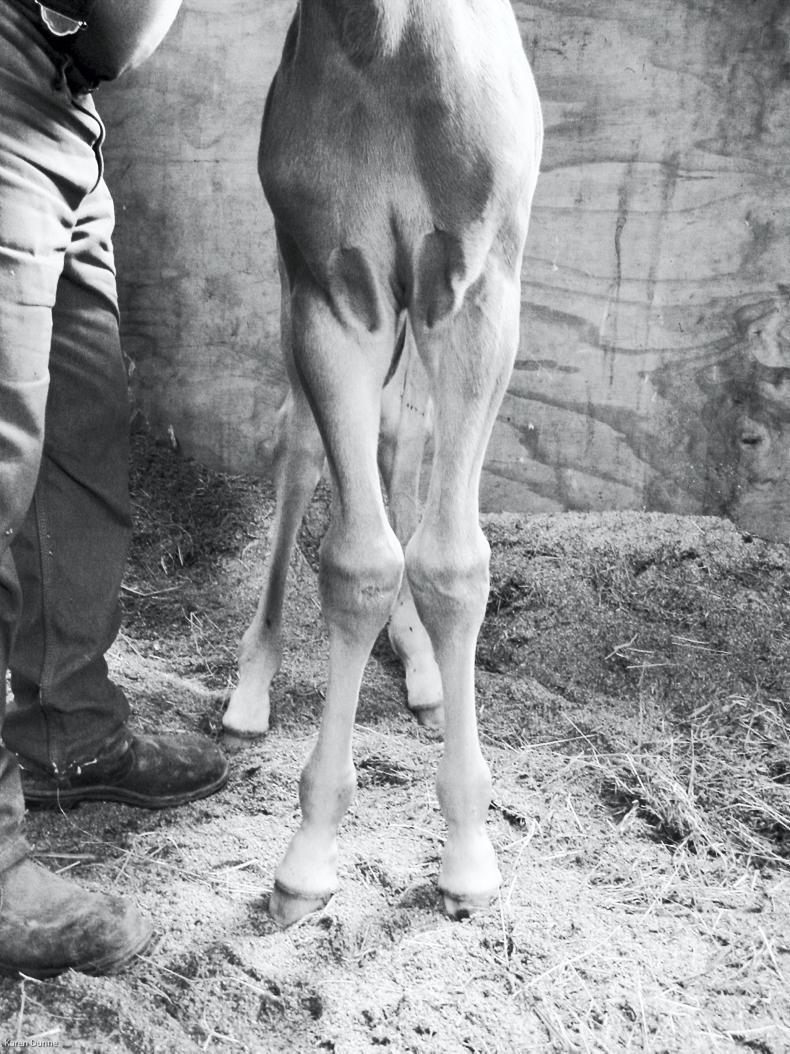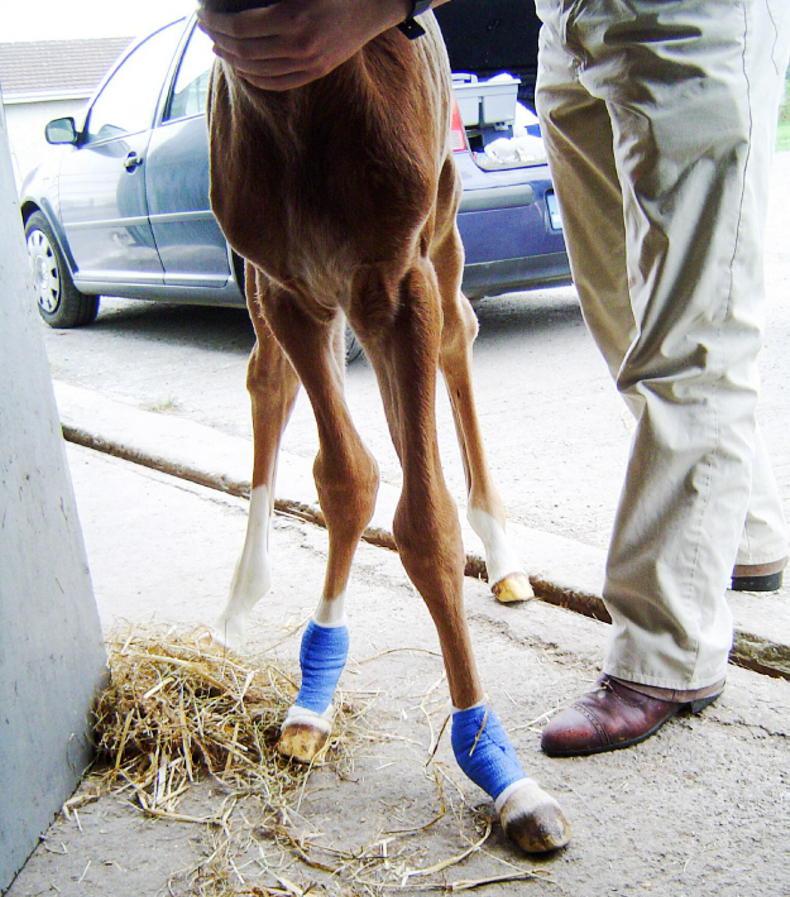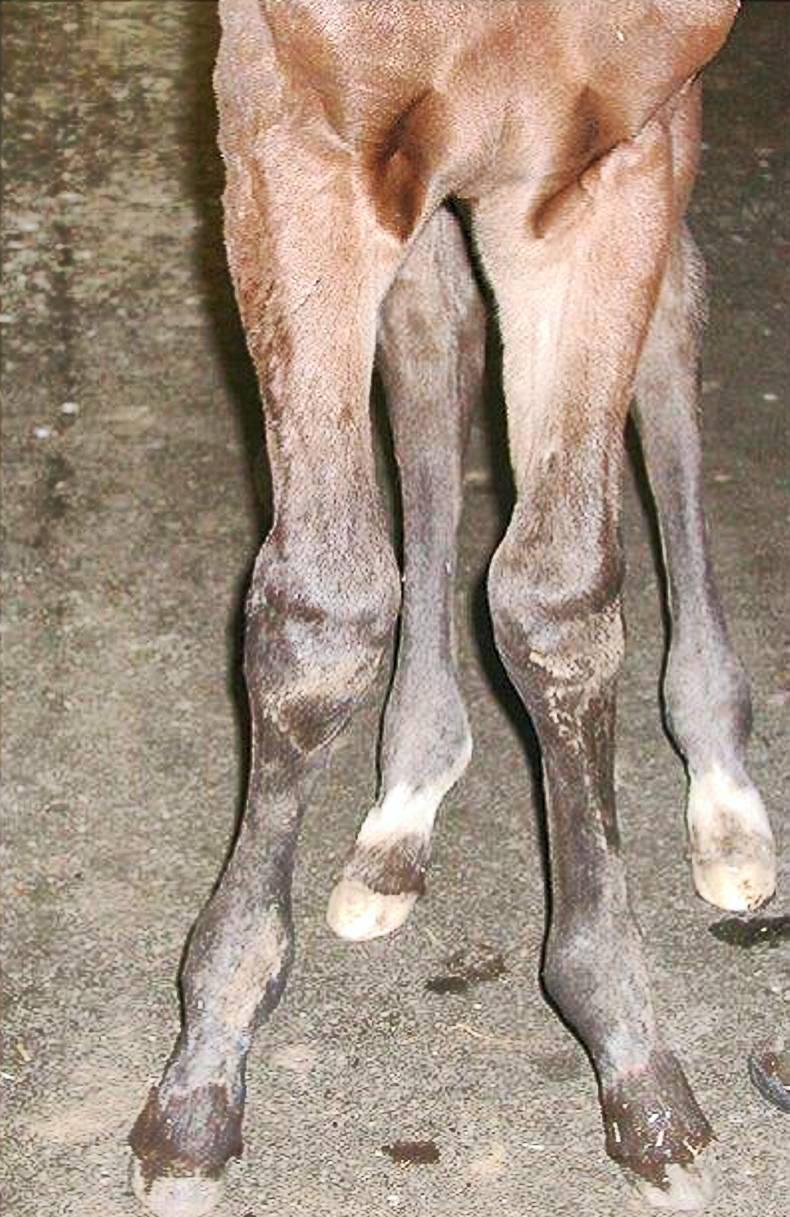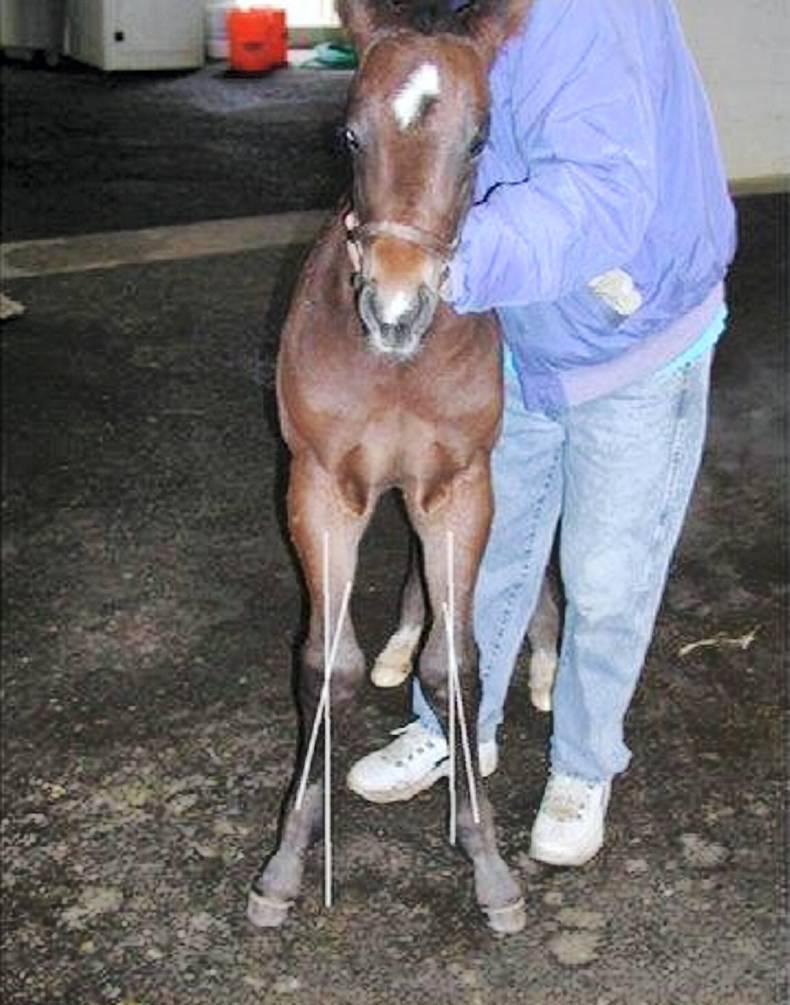AS foals grow, breeders agonise over whether their limbs are growing straight and true. Deviations from the norm must be identified and corrected early for there to be any real prospect of a good return at the sales or on the track. Such deviations are generally classified as:
In this, the first of a two-part article, we will consider angular limb deformities. View the standing foal carefully from in front and from behind; take photographs and measure angles of deviation from the expected normal. Watch the foal move at walk and trot, view video footage in slow-motion.
Your vet may take radiographs of the area(s) of interest – in particular if the foal is prematurely born – overly soft bones may just not be ready for much weight bearing.
Valgus – knock-knees, cow hocks and splay-legs
Young foals are expected to have a minor outward deviation of the lower limb – this is corrected naturally as the chest of the maturing yearling expands in width. But excessive lateral deviation of the lower limb (valgus). Picture the point of the limb which is at the centre of the issue - the pivot point. The limb will look (from in front or behind the foal) like a banana with convex (inner) and concave (outer) sides. Growth plates in bones lower down the limb close earlier than those further off the ground. Intervention is thus needed more swiftly if the fetlock is incriminated as the pivot point, less urgently if pivoting is from knee or hock.
An experienced farrier will trim the hoof correctively and very possibly glue on medial hoof extensions. This encourages the hoof to stand in more under the body. If valgus is complicated by rotation of the limb, the focus of hoof trimming and/or hoof extension will have to be similarly rotated around the hoof wall. Regular review with an experienced eye is essential – ‘little and often’ gently instructs the limb to grow in the desired direction.
If the case is complicated, the degree of angulation or rotation severe or the response to treatment disappointing, then surgical intervention may be warranted. Veterinary procedures largely rely on encouraging growth of bone on the outer aspect of the limb (elevation of the bone’s outer periosteum) or retarding growth on the inner (the insertion of metal implants).
Varus – pigeon toes
A varus deformity, on the other hand, is one in which the lower limb deviates inward – toward the midline – with the joint above seeming pushed out more to the outside. The pivot point again may be at fetlock, knee or hock. Compared to valgus, intervention needs to be more swift, regular and expert – as otherwise the natural growth of the limb will make matters even worse. Corrective trimming of the hoof combined with lateral hoof extensions, regularly repeated, may well suffice. But surgical intervention must be considered also. Surgery involves the same principles and procedures as for valgus but on the opposite aspect of the limb – the vet elevates the periosteum on the inner aspect to stimulate growth and/or restricts growth using metal staples, screws and perhaps wire on the outer.
Periosteal elevation (or ‘stripping’) generally means one surgery under general anaesthesia (GA). Staples/screws/wire is a two-GA job – once to insert the metal device, once again to remove it when the vet deems the device has done its work. Both carry the risk of complications – most notably the anaesthetic itself, infection at the site of surgery and scarring including white hairs as the foal grows.


 This is a subscriber-only article
This is a subscriber-only article
 It looks like you're browsing in private mode
It looks like you're browsing in private mode










SHARING OPTIONS: